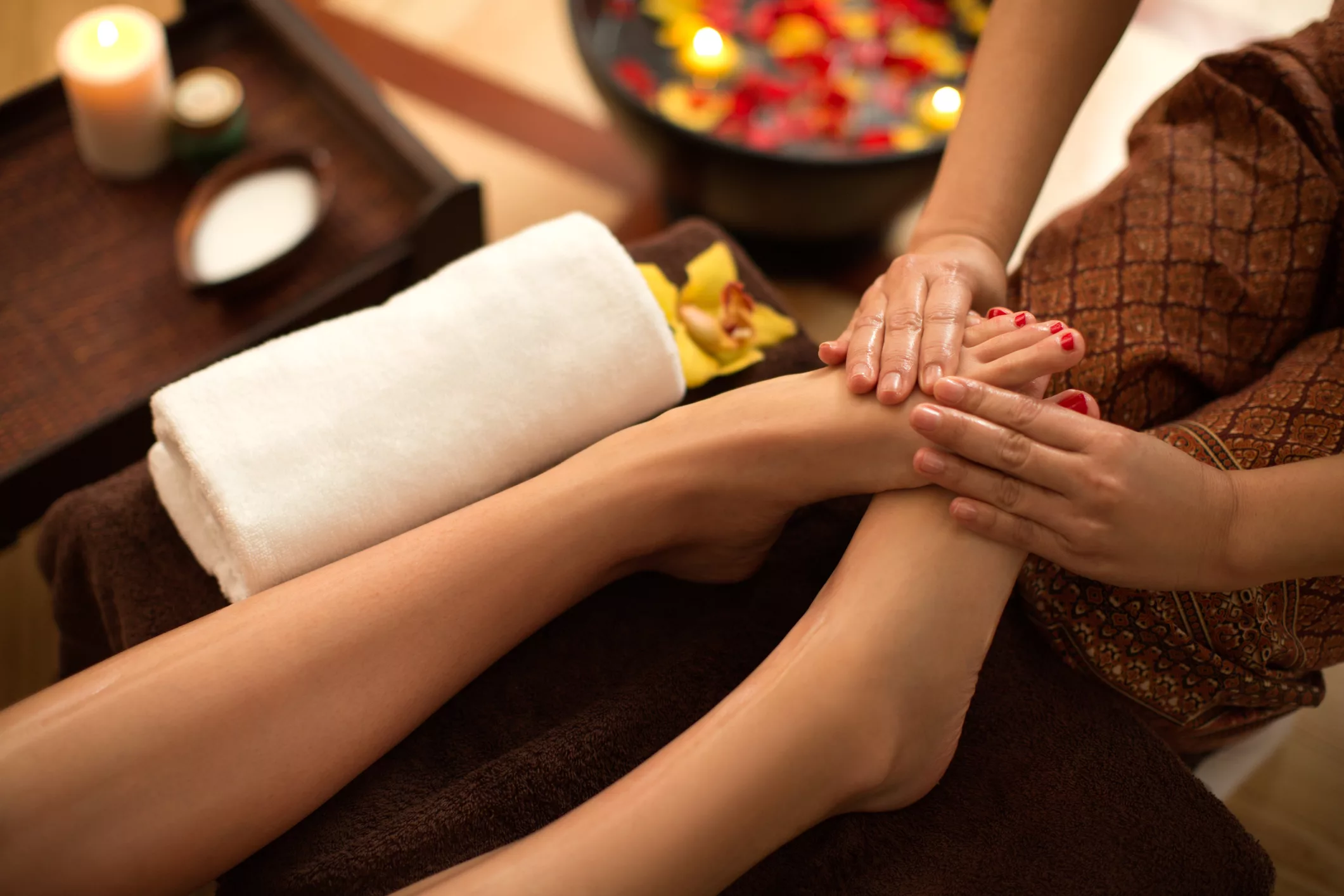
Ever heard of reflexology? You may have been exposed to it through social media or the news, but if you’re wondering what exactly this new trend is all about – read on! Reflexology has ancient origins, believed to be developed over 1,000 years ago by the Yellow Emperor’s Chinese Internal Medicine division and became one of many therapies that were used in traditional medicine throughout time up until today.
What is Reflexology?
Reflexology is an ancient practice dating back to 1,000 B.C. The Yellow Emperor’s Classic Internal Medicine Guide which talks of “examining foot method” or a technique that can be used on the feet and hands for pain relief. With adaptations and modifications made we now know this practice as reflexology! The application of pressure to areas on the feet (or hands), the pressure inhibits relief and relaxation to corresponding “zones’ ‘ or body parts. This in turn is why this practice is nicknamed “Zone Therapy.”
Reflexologists (certified practitioners of reflexology) use foot charts to guide them as they apply pressure. They do this with thumb, finger and hand massage techniques based on a pseudoscientific system of zones that reflect the idea that such work can cause physical changes in related areas throughout your body’s network!
What are the Benefits?
Reflexology may reduce pain and improve psychological symptoms such as stress! It can also help you relax, sleep better–and you may even feel healthier. Though there’s no scientific proof that reflexology works on medical conditions, it could be an option if you’re seeking relaxation or a neuropathic method of pain relief. The risk associated with this treatment is extremely low; so it might make sense for some people who want relief from their ailments without needing potentially harmful chemicals or surgery.
The Focus of the Session
There is a debate between reflexologists on the intention of Reflexology. Some claim reflexology can remove “blockage” of an “energy field”, “invisible life force”, or “Qi”, and promote healing. In ancient Chinese beliefs, the qi (pronounced “chee”) or “vital energy” flows through each person. When Qi is blocked, it’s believed a person will feel stress and potentially illness.
Another philosophy is that practitioners can relieve stress and pain in other parts of the body through the manipulation of certain “pressure points” of the feet. In the 1890s, British scientists found that nerves connect the skin and internal organs. They believed that the body’s entire nervous system tends to adjust to outside factors, including touch. Others believe the body is composed of 10 vertical zones each connected to corresponding parts of the fingers and toes.
Reflexologists do not diagnose any abnormalities they may observe during sessions; instead their goal is always to reduce unwanted symptoms so you can enjoy an improved quality life. It’s also important to note that there is no proven scientific evidence that it exists on the effectiveness of reflexology. Beliefs and intentions aside, the end goal is to provide reduced pain or relief.
How does reflexology feel
Reflexologists stimulate the nervous system to do the work of balancing and releasing; they are not “fixing” the discomfort per say. Their goal is rather to bring the whole body into balance, and then the pain will subside.
If your reflexologist finds pain, congestion, or tightness during the session, they will apply pressure to work on bringing the body back into balance. Experiences vary from a general feeling of relaxation, to a sense of “lightness” or tingling in the body, as well as feelings of warmth, a sense of “opening,” or “energy moving” from the practitioner’s pressure to the specific body area or organ. There are common normal reactions during the session such as perspiration of hands or feet, feeling light-headed, sensation of being cold or chilled, thirst ect.
What are the costs and how do I find a reflexologist?
In some countries (like the United States and Canada), insurance companies may cover the cost of Reflexology. The practice is an alternative form of health care or pain management, many times insurance companies will require traditional accepted methods to be used first such as physical therapy.
Depending on your locations and the amount of time of your service, pricing for reflexology can vary. On average in the US, you can expect to pay anywhere between $30-50 for a 30-minute session, $40-90 for a 1-hour session and $90-$175 for a 90 minute session. Overall, studies show follow-up sessions may be suggested for once a week for six weeks, then if you had a session once every six months and will vary by practitioner.
Finding a reflexologist can be done many different ways. Asking others for a recommendation is a great place to start! Many reflexologists practice other forms of massage therapy as well, so when searching online it’s important to find massage therapists with reflexology as a specialty. You can also visit professional association websites as well:
American Reflexology Certification Board
Reflexology Association of America
Professional Reflexology Associations.
Conclusion paragraph: Reflexology is a relatively low-risk massage practice that has been shown to relieve pain and stress for some individuals. Though scientific evidence of its true effectiveness is lacking, many people find the practice to be relaxing and beneficial. If you’re looking for a way to relax and de-stress, reflexology may be worth trying! Be sure to do your own research before booking a session, and if you have any questions or concerns, reach out to your practitioner. Thanks for reading!

